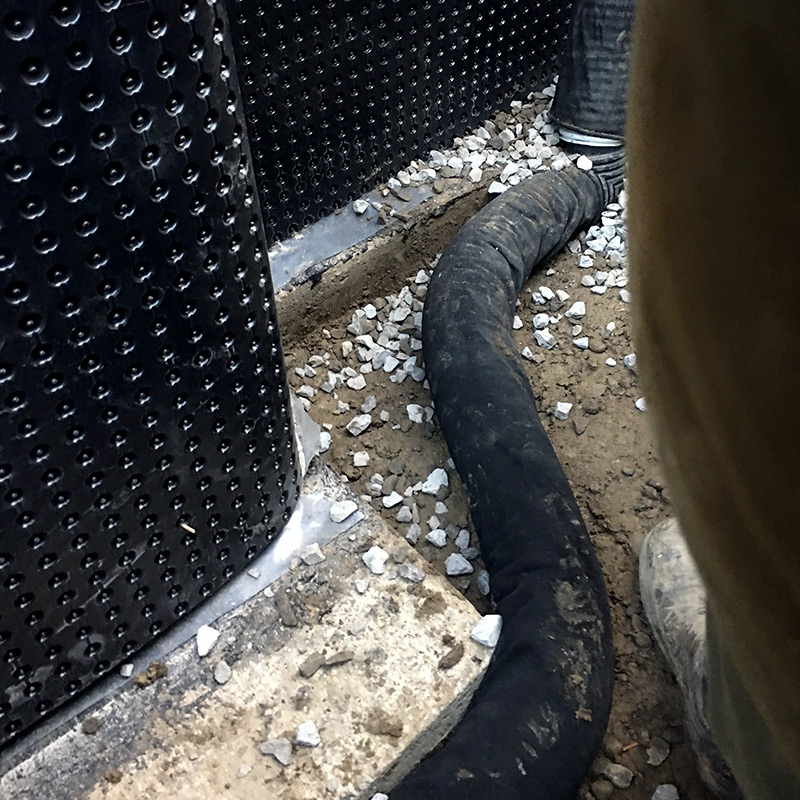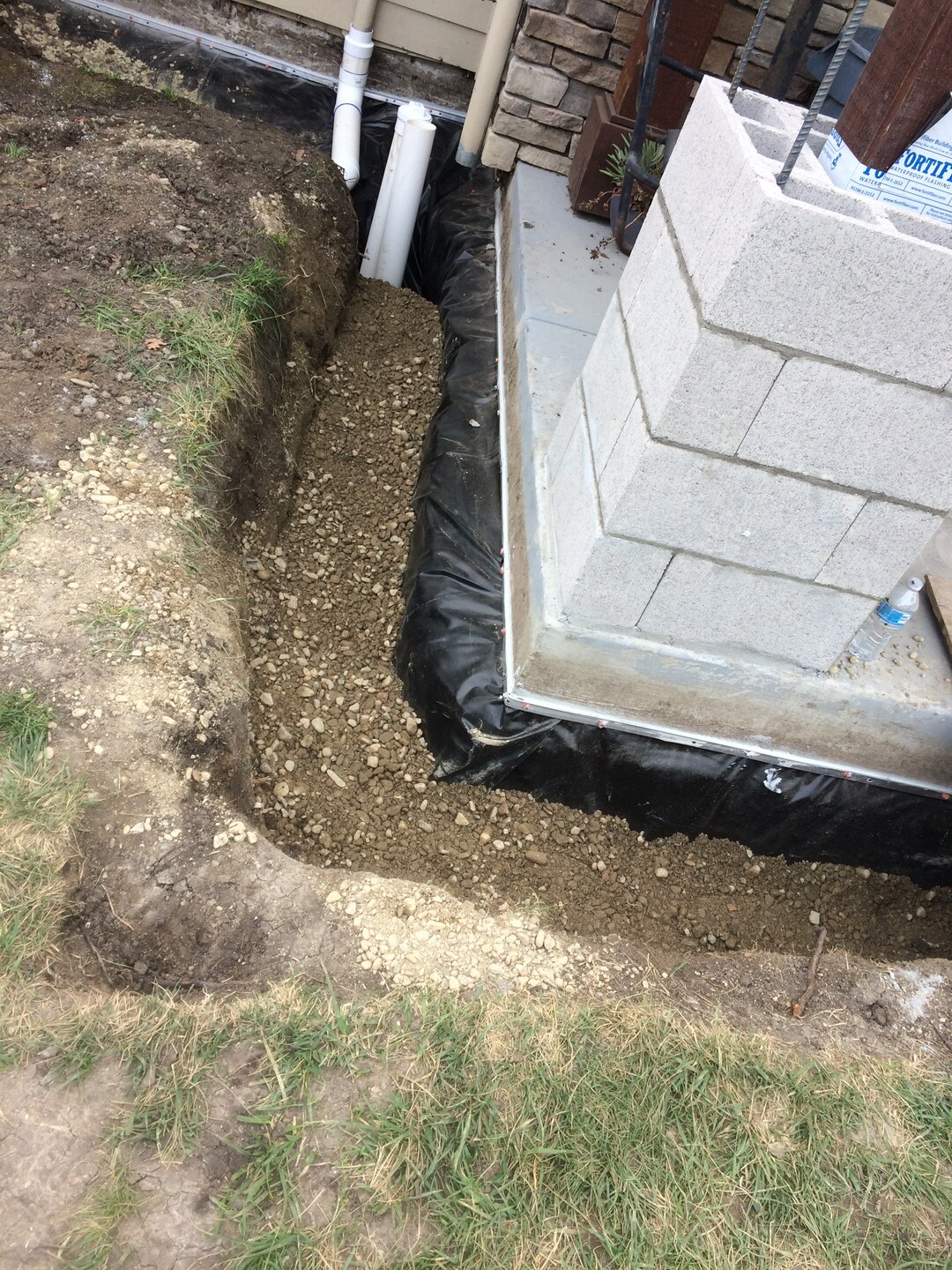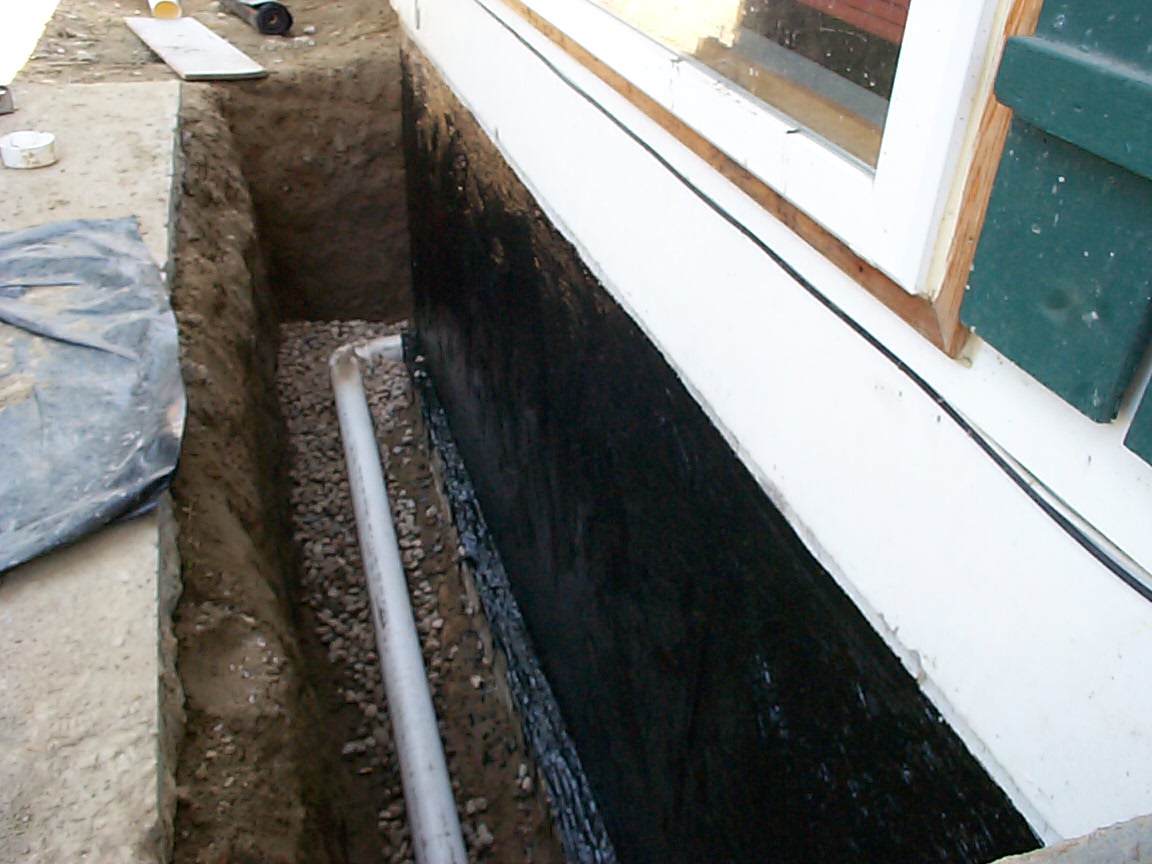Footing Drain Servicesin Lapeer MI
Footing Drains to Ensure Solid and Dry Foundations
We Are Locally Owned & Operated For Over 37 Years
Contact Us Today!
We Serve Businesses In And Around The Following Cities:
About Footing Drain Services
Introduction: The Importance of Footing Drain in Commercial Properties
Welcome to the comprehensive guide to Footing Drain, where we delve in-depth into the process, benefits, and real-world applications of this crucial component of commercial property construction. If you have ever questioned the significance of footing drain in sustaining the structural integrity of buildings located in the beautiful city of Lapeer and beyond, you are not alone. This guide exists to augment your understanding, beginning with the ins and outs of exterior footing drain and footing drainage system, and culminating in insightful tips on footing drain excavation, repair, and replacement.
Understanding the Footing Drain Process
The journey to understanding the footing drain process begins with the foundation footing drain system, an essential aspect of maintaining a dry and sturdy foundation. Moreover, for those immersed in the property world, a well-maintained footing drain is often synonymous with structural longevity. This is achieved by digging a trench around the foundation, placing perforated pipes at the base, and filling it up with gravel. The water is directed away from the foundation, preventing costly damages to the structure over time.
Commonly known as the house footing drain, this system is not only integral to residential properties but also building blocks of commercial real estate in Lapeer. Nonetheless, the specifics can vary based on the site’s topography and environmental factors. When carried out efficiently by professionals like D&J Contracting, it can save your commercial property from potential damage, effectively becoming a saving grace for businesses across the city.
Footing Drain – Benefits Galore
The thought and labor invested in planning and implementing the footing drain system pay dividends in the long run. Perimeter footing drain, for instance, functions extraordinarily to prevent water from reaching the basement. This can become especially crucial during heavy rains or snowmelt, conditions that would otherwise lead to footing drains basement flooding. With a functioning drainage system, water accumulation around your commercial property is avoided, saving you from property damage and financial losses.
Perhaps what is not so widely recognized is how the implementation of footing drain also improves the overall air quality within your property. With the mitigation of dampness comes a decreased likelihood of mold and mildew growth, notorious for contributing to a host of health issues among your staff and clients.
Real-World Footing Drain Applications
Offering a broad spectrum of services, D&J Contracting is one company that uses footing drains to protect and preserve the structural integrity of commercial properties in Lapeer. Whether it involves a new construction project, footing drain excavation, or the skilled tasks of footing drain repair and replacement, their expertise merges science with practical experience to deliver excellent results.
Consider, for example, a corporate building situated in a terrain predisposed to heavy rainfall. Without a proper draining system in place, the basement could become a pool of stagnant water, leading to structural damage and potential financial setbacks. Here, the professionals at D&J Contracting could install a solid footing drain system, ensuring the safe redirection of water away from the property, and protecting the building from potential harm. Such practical, real-world applications make footing drain installations essential for commercial buildings, particularly those situated in adverse weather conditions.
Necessary Footing Drain Maintenance
Just as important as installing a footing drain, is its routine maintenance. Over time, footing drains can become clogged with soil, leaves, and debris, losing their effectiveness in directing water away from your property. Regular footing drain repair and maintenance, conducted by experienced contractors like D&J Contracting, is crucial to prevent such issues and to maintain the strength and integrity of your commercial property. Furthermore, in dire circumstances, where repairs are not enough, a total footing drain replacement becomes necessary to ensure that the building remains safe from water damage.
Reflecting on the Importance of Footing Drains
From our exploration thus far, it should be clear that footing drains play a pivotal role in maintaining the health of commercial properties. They help prevent flooding, increase structural longevity, and can even improve the internal air quality of the building. The process of installation may seem comprehensive, but equipped with sufficient understanding and guidance — and the support of a professional contracting company like D&J Contracting — the value it brings makes it a necessary feat. When operating a business in a thriving city like Lapeer, or anywhere else for that matter, incorporating a footing drain system into your commercial property strategy isn’t a luxury; it’s an essential.
Footing Drain Services Gallery


Call Us Today to receive your Free Quote for
Footing Drain in Lapeer
Serving: Lapeer, Michigan

About Lapeer, Michigan
|
|
This section needs additional citations for verification. (January 2020)
|
By an ordinance of the Congress of the United States passed on July 13, 1787, the area lying northwest of the Ohio River, though still occupied by the British, was organized as the Northwest Territory. Lapeer County was once part of the Northwest Territory. In January 1820, the county of Oakland was formed, which served the area now known as Lapeer, until the County of Lapeer was formed in 1837, when Michigan became a state. The first elections were for county officers, with 520 persons voting in 1837.
Folklore claims Lapeer was derived from the naming of the south branch of the Flint River, which flows northwestward in Lapeer County. French and Indian traders frequently passed over this section of the county and through the river, ultimately naming the city for the stone that lay at the river bottom. In French, stone is called “la pierre”; the English pronunciation of these words gives Lapeer. The river was named Flint, synonymous with stone. (See List of Michigan county name etymologies.)
It is also believed that the first settlers who came from New York State may have brought the name Lapeer from a similarly named city in their home state. A third supposition is that French missionaries named the city Le Pere, meaning The Father.
The first settlers in Lapeer were a group of men named Alvin N. Hart, Oliver B. Hart, and J.B. Morse. The most prominent of the three, Alvin N. Hart, was born in Cornwall, Connecticut, on February 11, 1804. He came to Lapeer in 1831 and platted the Village of Lapeer, November 8, 1833. The plat was registered in Pontiac on December 14, 1833, in the County of Oakland; four years before Michigan became a state and Lapeer became a county. Alvin N. Hart became a State Senator in 1843, representing Lapeer, Oakland, Genesee, Shiawassee, Tuscola, Saginaw Counties and the entire Upper Peninsula. He was instrumental in having the State Capitol relocated from Detroit to Lansing. Hart died on August 22, 1874, and is buried in Lapeer.
The second group of settlers were Enoch J. White and his family. He was born in South Hadley, Massachusetts in 1814. He came to Lapeer in 1833. Of pioneer stock, Alvin N. Hart and Enoch J. White both had the initiative to start new communities. Mr. Hart formed Lapeer and Mr. White formed what was then known as Whitesville, which now consists of the western portion of Lapeer. A tamarack swamp once separated these two settlements.
Other distinguished natives include John T. Rich, former governor of the state of Michigan; Louis C. Cramton, special assistant to the U.S. Secretary of the Interior in 1931 and 1932. He led studies of the area around the Colorado River that led to the establishment of the first National Recreation Area, Lake Mead National Recreation Area; Charles Potter, whose son became a U.S. Senator; William Reed, Big Ten Football Commissioner; and Marguerite deAngeli, internationally known writer of children’s books.
At one time, there were two courthouses. The White family erected one at the present site of the Old Lapeer High School at Main and Genesee Streets, while the Hart family erected one at Nepessing and Court Streets. The Board of Supervisors purchased the Hart courthouse for $3,000, which is now the oldest continuously running courthouse in the state of Michigan and one of the oldest 10 courthouses in the United States. White’s courthouse later became the first school in Lapeer called Lapeer Academy.
Over time, it became evident that the business district would be near the Courthouse, so the city’s founders moved the Opera House piece-by-piece to its present location at the southeast corner of Court and Nepessing Streets in 1879. The building is now known as the White Block.
Lapeer’s first church was the Congregational Church; organized in 1833, the same year Lapeer was platted. The Methodist Episcopal Church opened its doors a year later, followed by the Baptist Church in 1858, the Immaculate Conception Catholic Church in 1866, the Universalist Church in 1873, the Methodist Protestant Church in 1877 and the Grace Episcopal Church in 1882.
Lumbering was the sole industry in the early days of Lapeer. The flourishing lumber business attracted the New York Central Railroad and Grand Trunk Railroad. Lapeer later became the intersection to two state trunk lines: M-21 and M-24. Industries today supply the automotive industry with gray iron casting, molded plastics, plastic fabrics, electrical harnesses and stamping.
On October 26, 2010, Lapeer became a founding member of the Karegnondi Water Authority.
On August 15, 2012, the fourth-largest Powerball jackpot was won from a ticket sold at a Sunoco station in Lapeer. The jackpot had an annuity value of $337 million.
According to the United States Census Bureau, the city has a total area of 7.38 square miles (19.11 km), of which 7.13 square miles (18.47 km) is land and 0.25 square miles (0.65 km) is water. It is considered to be part of the Thumb of Michigan, which in turn is a subregion of the Flint/Tri-Cities.
| Census | Pop. | Note | %± |
|---|---|---|---|
| 1870 | 1,772 | — | |
| 1880 | 2,911 | 64.3% | |
| 1890 | 2,753 | −5.4% | |
| 1900 | 3,297 | 19.8% | |
| 1910 | 3,946 | 19.7% | |
| 1920 | 4,723 | 19.7% | |
| 1930 | 5,008 | 6.0% | |
| 1940 | 5,365 | 7.1% | |
| 1950 | 6,143 | 14.5% | |
| 1960 | 6,160 | 0.3% | |
| 1970 | 6,314 | 2.5% | |
| 1980 | 6,198 | −1.8% | |
| 1990 | 7,759 | 25.2% | |
| 2000 | 9,072 | 16.9% | |
| 2010 | 8,841 | −2.5% | |
| 2020 | 9,023 | 2.1% | |
| U.S. Decennial Census 2010 2020 |
|||
As of the census of 2020, there were 9,023 people, 3,652 households, and 1,898 families living in the city. The population density was 1,201.5 inhabitants per square mile (463.9/km). There were 3,921 housing units at an average density of 522.1 per square mile (201.6/km). The racial makeup of the city was 81.7% White, 7.7% African American, 0.5% Native American, 0.7% Asian, 1.0% from other races, and 6.4% from two or more races. Hispanic or Latino of any race were 4.4% of the population.
There were 3,652 households, of which 22.3% had children under the age of 18 living with them, 31.5% were married couples living together, 39.9% had a female householder with no spouse present, 19.3% had a male householder with no spouse present, and 52.0% were non-families. 42.8% of all households were made up of individuals, and 17.7% had someone living alone who was 65 years of age or older. The average household size was 2.09 and the average family size was 2.79.
The median age in the city was 40.3 years. 18.3% of residents were under the age of 18; 10.7% were between the ages of 18 and 24; 26.2% were from 25 to 44; 29.8% were from 45 to 64; and 14.3% were 65 years of age or older. The gender makeup of the city was 53.6% male and 46.4% female.
As of the census of 2010, there were 8,841 people, 3,446 households, and 1,927 families living in the city. The population density was 1,240.0 inhabitants per square mile (478.8/km). There were 3,956 housing units at an average density of 554.8 per square mile (214.2/km). The racial makeup of the city was 88.6% White, 7.6% African American, 0.6% Native American, 0.8% Asian, 0.5% from other races, and 1.8% from two or more races. Hispanic or Latino of any race were 3.9% of the population.
There were 3,446 households, of which 32.6% had children under the age of 18 living with them, 32.1% were married couples living together, 18.3% had a female householder with no husband present, 5.5% had a male householder with no wife present, and 44.1% were non-families. 39.2% of all households were made up of individuals, and 15.6% had someone living alone who was 65 years of age or older. The average household size was 2.22 and the average family size was 2.97.
The median age in the city was 36 years. 24.1% of residents were under the age of 18; 11% were between the ages of 18 and 24; 27.2% were from 25 to 44; 24.2% were from 45 to 64; and 13.5% were 65 years of age or older. The gender makeup of the city was 51.5% male and 48.5% female.
As of the census of 2000, there were 9,072 people, 3,443 households, and 1,979 families living in the city. The population density was 1,635.5 inhabitants per square mile (631.5/km). There were 3,658 housing units at an average density of 659.5 per square mile (254.6/km). The racial makeup of the city was 89.91% White, 5.95% African American, 0.47% Native American, 0.57% Asian, 0.03% Pacific Islander, 1.09% from other races, and 1.96% from two or more races. Hispanic or Latino of any race were 3.33% of the population.
There were 3,443 households, out of which 33.0% had children under the age of 18 living with them, 38.3% were married couples living together, 15.7% had a female householder with no husband present, and 42.5% were non-families. 36.8% of all households were made up of individuals, and 14.2% had someone living alone who was 65 years of age or older. The average household size was 2.29 and the average family size was 3.02.
In the city, the population was spread out, with 24.6% under the age of 18, 9.9% from 18 to 24, 36.5% from 25 to 44, 17.1% from 45 to 64, and 11.9% who were 65 years of age or older. The median age was 33 years. For every 100 females, there were 106.8 males. For every 100 females age 18 and over, there were 110.6 males.
The median income for a household in the city was $35,526, and the median income for a family was $42,872. Males had a median income of $36,731 versus $24,552 for females. The per capita income for the city was $16,608. About 8.5% of families and 10.2% of the population were below the poverty line, including 12.3% of those under age 18 and 12.1% of those age 65 or over.
Call Us Today to receive your Free Quote for
Footing Drain in Lapeer
Related Services in Lapeer, Michigan
We Serve Businesses In The Following Zip Codes:
48007, 48015, 48021, 48026, 48035, 48036, 48038, 48042, 48043, 48044, 48045, 48046, 48047, 48048, 48050, 48051, 48066, 48071, 48080, 48081, 48082, 48083, 48084, 48085, 48088, 48089, 48090, 48091, 48092, 48093, 48098, 48099, 48225, 48230, 48236, 48310, 48311, 48312, 48313, 48314, 48315, 48316, 48317, 48318, 48397